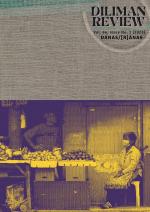Citation:

Abstract:
The unprecedented nature of the COVID-19 pandemic has wrought a lot of changes in our lives and in our use of language. Scientific and technical terms have become part of our daily conversations. Words like coronavirus, self-quarantine, incubation period, while common to those in the medical field, were used perhaps infrequently by the general population, until recently. Tony Thorne called it the “medicalisation” of everyday language. (King’s College London, 2020). The #LexiCOVID Project was an online initiative carried out during the month of August 2020. The main goal was to look into words and concepts that Filipinos associated with the pandemic. The results of the project were then disseminated through a series of online posters on the UP Department of Linguistics Facebook page (shorturl.at/itIMR) and Instagram account (shorturl.at/yDL18). Responses to our survey featured words already in use, whether in a local or foreign language, but only recently gained usage outside their technical fields e.g., flatten(ing) the curve. Some have undergone shifts in meaning due to how they were being used in mass and social media e.g., social distancing. Some describe our new work arrangements and modes of interaction: WFH (work from home), and contactless delivery. Some neologisms in the year 2020 were also documented, e.g., Zoomustahan. All in all, what emerged from our results is a record of our lives in lockdown describing our collective experience and sense-making.
Keywords: medicalization, semantic shift, corpus linguistics
ISO 639-3 language codes: tgl, fil, eng, ita, ilo, spa, war, loc, ceb, deu, hil, pam

